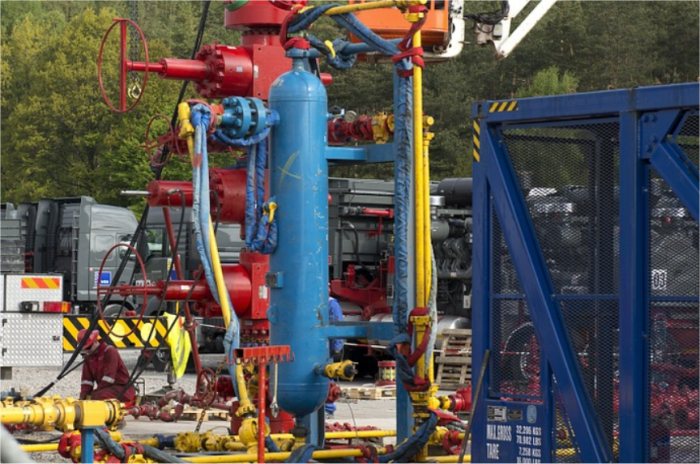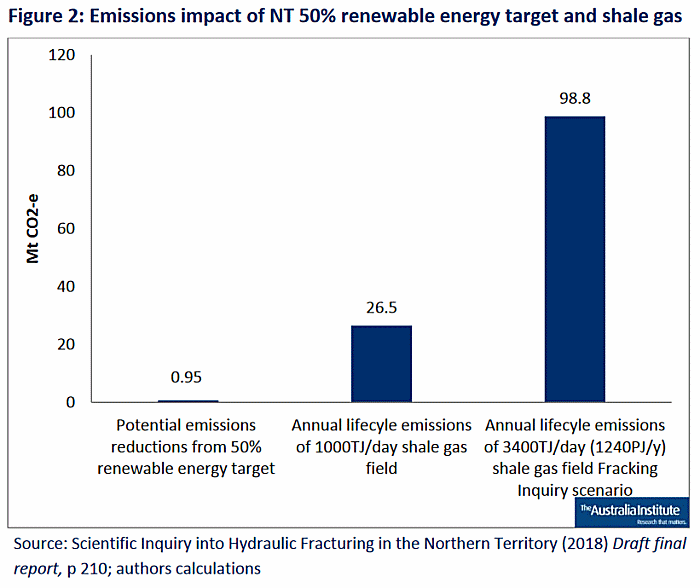
Image: anita_starzycka
Analysis of the final report into fracking in the Northern Territory reveals the practice could dwarf the emissions reduction benefits from the NT’s renewable energy aspirations.
The Final Report from The Scientific Inquiry into Hydraulic Fracturing, released late last month, signified the end of a long investigation into the associated environmental, social and economic risks and impacts of accessing onshore unconventional gas reserves in the Territory. The report will help inform a decision by the NT Government as to whether a moratorium on hydraulic fracturing established in September 2016 should end and the Territory opened up to fracking.
Risk Assessment Change Of Heart
The Final Report is a hefty tome, but something that stood out in the summary was this:
“For any new onshore shale gas field in the NT, the Panel assessed the unmitigated risks to climate change associated with methane emissions and GHG emissions (including methane) to be either ‘medium’ or ‘high’. At these levels of risk, further mitigation is required.”
In the draft Final report, the risk was just noted as “medium”, so the change in assessment between the draft and final reports was quite interesting.
Even with the acknowledgement of this, the Panel still believes challenges and risks associated with any onshore shale gas industry in the NT can be “appropriately managed” – if all of the many recommendations it made are implemented, and in full. The Territory is a huge place that’s sparsely populated, so managing and monitoring the sector to ensure adherence would be quite a task.
The Australia Institute has been taking a look at the report and has concluded that allowing fracking in the Territory could result in:
- An increase in Australia’s total greenhouse gas emissions of more than 5%.
- Greenhouse gas emissions equivalent to six times the Northern Territory’s total 2016 emissions.
- Emissions equivalent to up to 100 times more than savings under the Northern Territory Government’s Roadmap to Renewables: 50% by 2030 policy, in which solar power plays an important role.

The Australia Institute says (PDF):
“The Northern Territory is likely to be heavily impacted by global warming. The threat of increasing extreme weather events and extreme heat mean that global emission reductions are vital to the health and wellbeing of all Territorians, its unique environment and the viability of many of its most important industries.”
In February, an open letter addressed to the Northern Territory Government signed by dozens of academics, scientists, health professionals and even a former fossil fuel executive stated fracking should not go ahead in the Territory “under any circumstances”.
The Final Report from The Scientific Inquiry into Hydraulic Fracturing can be downloaded here (PDF), but at 506 pages, it’s quite a lengthy read. The much slimmer, but still substantial summary (61 pages), can be viewed here (PDF).

 RSS - Posts
RSS - Posts



Speak Your Mind